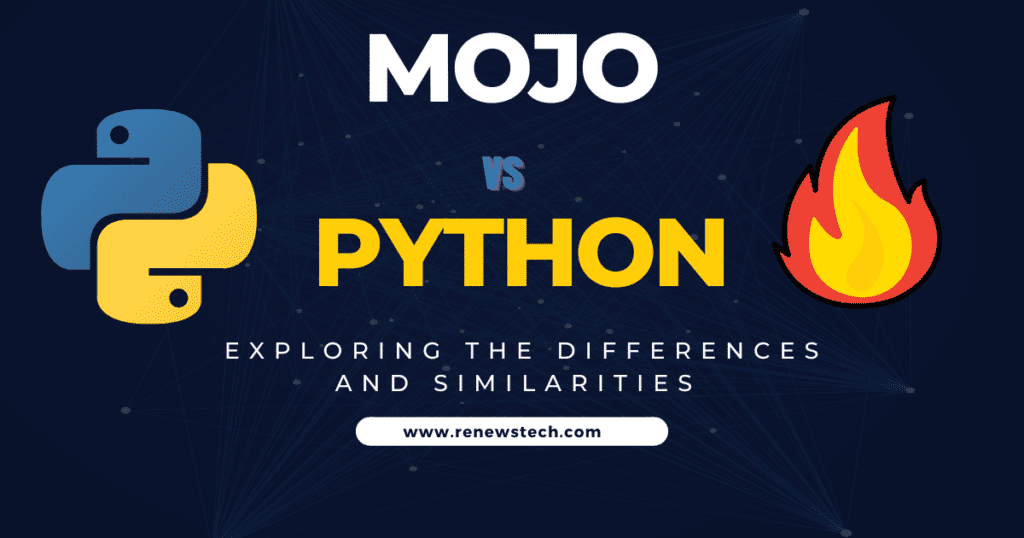Introduction
When it comes to web development, choosing the right framework is difficult. In this blog post, we will delve into the world of web frameworks and explore the differences and similarities between MOJO and Python. Both MOJO and Python are popular choices among developers, each with its own set of advantages and use cases. By understanding their unique features, you’ll be equipped with the knowledge to make an informed decision for your next web development project.
MOJO: Empowering Simplicity
What is MOJO?
MOJO, also known as Mojolicious, is a modern web framework written in Perl. It prides itself on being intuitive, powerful, and easy to use. With MOJO, you can build web applications and APIs effortlessly.
Simplicity at its Core
One of the best features of MOJO is it’s simplicity. The framework is designed to make web development enjoyable and straightforward. Whether you’re a seasoned developer or just starting out, MOJO’s intuitive syntax and clear documentation ensure a smooth learning curve.
Key Features of MOJO
MOJO offers a range of features that enhance the web development process. Some notable features include:
Real-time Communication:
MOJO provides built-in support for web-sockets, making real-time communication between the client and server a breeze.
Powerful Routing: With MOJO’s powerful routing system, you can easily map URLs to actions, simplifying the development of complex applications.
Template Engine:
MOJO comes with a flexible and efficient template engine, allowing you to create dynamic web pages with ease.
Built-in Testing:
Testing is an integral part of web development, and MOJO simplifies the process by offering built-in testing tools and utilities.
Python: Versatility and Power
What is Python?
Python needs no introduction. It is a versatile and powerful programming language used for a wide range of applications, including web development. Python’s popularity stems from its readability, extensive libraries, and vibrant community.
Harnessing Python’s Strengths
Python’s web development capabilities are bolstered by its vast ecosystem of frameworks and libraries. Django and Flask are two popular Python web frameworks that offer distinct advantages. Let’s explore some key features of Python in the context of web development.
Key Features of Python
Rich Ecosystem:
Python has a rich ecosystem of frameworks and libraries. Django, with its batteries-included approach, offers a comprehensive solution for building complex web applications. Flask, on the other hand, provides a lightweight and flexible framework suitable for small to medium-sized projects.
Scalability:
Python’s ability to handle high traffic and scale horizontally makes it an excellent choice for large-scale web applications.
Data Analysis and Machine Learning:
Python’s extensive libraries, such as NumPy, Pandas, and TensorFlow, make it a popular choice for data analysis and machine learning applications.
Integration Capabilities: Python seamlessly integrates with other languages and technologies, making it ideal for integrating existing systems or building microservices.
Comparing MOJO and Python: Finding the Right Fit![]()
![]()
![]()
![]()
![]()
Use Cases
MOJO and Python cater to different use cases and project requirements. MOJO’s simplicity and Perl’s strengths make it an excellent choice for lightweight web applications and APIs. On the other hand, Python’s versatility and extensive ecosystem make it a go-to option for a wide range of projects, from small-scale websites to large-scale applications.
Learning Curve
MOJO’s simplicity allows for a quick learning curve, especially for developers familiar with Perl. Python, with its clean syntax and vast documentation, is also beginner-friendly, making it accessible to developers at all levels of expertise.
Community and Support
Both MOJO and Python have active and supportive communities. However, Python’s community is notably larger, providing a wealth of resources, tutorials, and libraries that can expedite the development process and address any challenges you may encounter.
Conclusion
In conclusion, both MOJO and Python have their own unique strengths and use cases in web development. MOJO shines in its simplicity and ease of use, while Python’s versatility and extensive ecosystem make it a powerhouse for various projects. Understanding the differences and similarities between these frameworks will help you make an informed decision based on your project’s requirements. Whichever framework you choose, you can rest assured that both MOJO and Python have vibrant communities and ample resources to support your web development journey.
Frequently Asked Questions
![]()
![]()
![]()
![]()
![]()
Which framework is better for beginners, MOJO, or Python?
Both MOJO and Python are beginner-friendly frameworks. MOJO’s simplicity may make it easier for developers familiar with Perl, while Python’s clean syntax and extensive documentation cater to developers at all levels of expertise.
Can MOJO be used for large-scale web applications?
MOJO is primarily designed for lightweight web applications and APIs. For large-scale applications, Python, with its scalability and extensive ecosystem, may be a better choice.
What are some popular Python web frameworks apart from Django and Flask?
Apart from Django and Flask, other popular Python web frameworks include Pyramid, Bottle, and CherryPy.
Does Python support real-time communication like MOJO?
While Python itself does not provide built-in support for real-time communication, there are third-party libraries like Flask-SocketIO and Django Channels that enable real-time functionality.
Which framework has a larger community, MOJO, or Python?
Python has a significantly larger community compared to MOJO, offering abundant resources, tutorials, and libraries to support developers.







